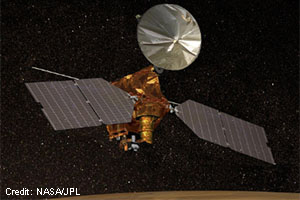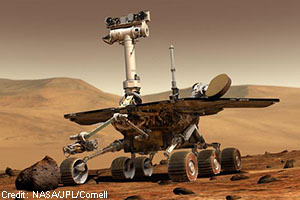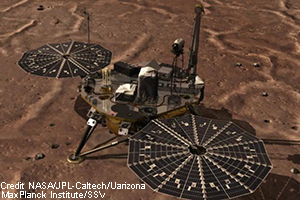
From TELESCOPES to ORBITERS to LANDERS and ROVERS
The scientific exploration of Mars began after telescopes were invented in the early 17th century.
After that, ground telescopes continued to be the tool for studying Mars.
This did not change until 1965 when the first spacecraft flew past Mars and obtained the first close-up images of Mars.
Information now comes from space telescopes, orbiters circling Mars, landers fixed on the surface and rovers that travel around.
EXPLORING MARS over TIME

Mars Reconnaissance
ORBITER
• arrived 10 March 2006
• orbits at about 280km
• maps surface features
• observes seasonal changes
• records global dust storms

Opportunity ROVER
• landed 25 January 2004
• solar-powered 6-wheeler
• driven more than 45 km
• identifies minerals
• analyses rocks and soil
• has a rock abrasion tool

Phoenix LANDER
• landed 25 May 2008
• located near North pole
• carried a gas analyser
• had a mini weather station
• dug using its robotic arm
• analysed soil chemistry
• verified water ice present
